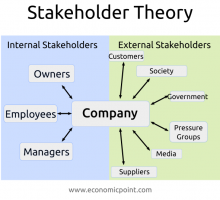Strategic planning is a management activity and a process that defines the direction and the objective of a business over the long term- It defines how resources should be allocated.
Goal of the Business Strategic Planning Process
A strategy helps business managers to take actions in the face of new threats and opportunities. Business strategic planning, allows managers to develop short term plans and objectives. It provide a focus to middle managers.
A strategic plan should not only be useful to improve the overall performance of a business and take advantage of new opportunities, but also should be a guide when new threats or a negative context impacts the business performance.
What is a Business Strategic Plan
A Business Strategic Plan is the outcome of the business strategic planning process. It’s a document that communicates an articulated plan that includes:
- Business goals, a mission and a vision.
- Actions needed to archive those goals.
Guide to Business Strategy
There is no fixed formula or process that leads to a strategic plan, but we will outline some basic steps or guidelines. It should be noted, that strategic planning is a process that should include creative thinking and understanding critical organizational skills.
A basic strategic planning process includes the following steps:
- Define or review the values, vision and mission of the organization.
- Carry out an environmental scan.
- Develop a series of long term goals
- Develop an action plan to achieve the goals
- Develop procedures to monitor the progress and modify the strategies based on changes in the environment
Who is in charge of Strategic Planning
Strategic planning should be a team effort that includes views from multiple people, including managers and employees. It can also take into account the views from suppliers and customers. Sometimes, an external consultant or consulting firm can be very helpful (more about this below).
Values Vision Mission
Define or review the values, vision and mission.
The values describe the desired culture of the organization. Values are principles that guide the behavior of the people. A vision statement says what the organization wishes to be in the future. A mission describes what business the organization is in, both now and in the future. The mission describes the purpose of the organization.
This statements should be clearly taken into account when developing the strategic plan, and described and understood by all of the employees, but specially by the managers.
Environment
Carry out an environmental scan and SWOT analysis
The analysis of the environment should be carried out in three levels:
1- Internal.
2- Industry.
3- Macroeconomy.
At this stage, strategic planning should asses the current strengths and weaknesses of an organization, and the current and future internal and external environments.
Of fundamental importance to the strategic plan is the inclusion of customer analysis and competitors analysis.
The SWOT analysis evaluates:
1- Strengths
2- Weaknesses
3- Opportunities
4- Threats
SWOT analysis provides a clear view of the possible competitive advantages of a company, but also the vulnerabilities and risks. It helps to identify the position of the company against it competitors. In the next steps, strategic planning should try to maximize and take advantage of the competitive advantages of the organization.
Strategic planning has a focus on the future: it takes the current environment into account, but also makes forecasts about the future resources of the organization and about the future environment, and how to better accomplish the organization goals under that environment.
Strategic planning assumes that certain aspects of the future can be influenced by the organization.
Goals
Develop a series of long term goals
Taking into account the values, vision and mission (step 1), the environment and the strength and weakness of the organization (step 2) the firm should seek to achieve a competitive advantage against it competitors.
Some generic strategies are trying to be the low cost producer in an industry, develop products or services that are considered different from the products of the competition or focus the efforts to better serve a narrow group of the market.
Strategic planning includes a formulation of the strategy. It should define long term goals goals of the organization. These goals should be measurable, like the margin of profit or the market share in 3 or 5 years ahead.
Once the goals are clearly defined, they should be used to drive organizational engagement. The plan should go down to sector and individual level, and those goals should be communicated to the corresponding people. This way, people will know what is they role and importance inside the business.

Implementation
Develop an action plan to achieve the goals (strategic implementation)
Strategic planning should define organizational steps and actions, and a basic outline resource allocation to achieve the defined goals. Some analyst say that the hardest part of the strategy is its implementation. Going from a series of general goals and long term course to actually define real actions to be taken, can determine the success of the strategic planning.
Control
Develop procedures to monitor the progress and modify the strategies based on changes in the environment (Evaluation and control)
Strategic planning is an ongoing process. The strategy can be changed as the organization gains more information and experience, but also when the predicted actual or future environment change. When strategic planning is taken as an ongoing process, it will help the organization to execute good business practices over the long run.
External consulting
An independent consultant can be helpful in the process of strategic planning:
- An external consultant can have a broader view of the external context but also can provide a better and unbiased appraisal of the internal processes and weakness.
- Additionally, an external consultant can have more experience in the strategic planning process, since he/she, or the external team, have probably helped other organizations across different situations.
Both facts are specially true in the case of a business that is developing a strategic plan for the first time, or when a strategic plan should be deeply reviewed.
Strategic Change
A change in the environment (technological change, new competitors, new markets) or internal management changes (new corporate vision, mergers & acquisitions) can lead to the need of strategic change. A strategic change is an important activity than have a great impact in a business. It can include shifts in the structure of the organization, the target market, policies, etc.
Summary
Strategic planning refers to develop a plan of action to achieve a particular goal. It includes an evaluation of the organization and the context. It has a focus on the future. It serves as a guide to allocate resources over the long run, but also as a guide to middle manager.
Taken as an ongoing process, strategic planning can be a key asset of an organization.



